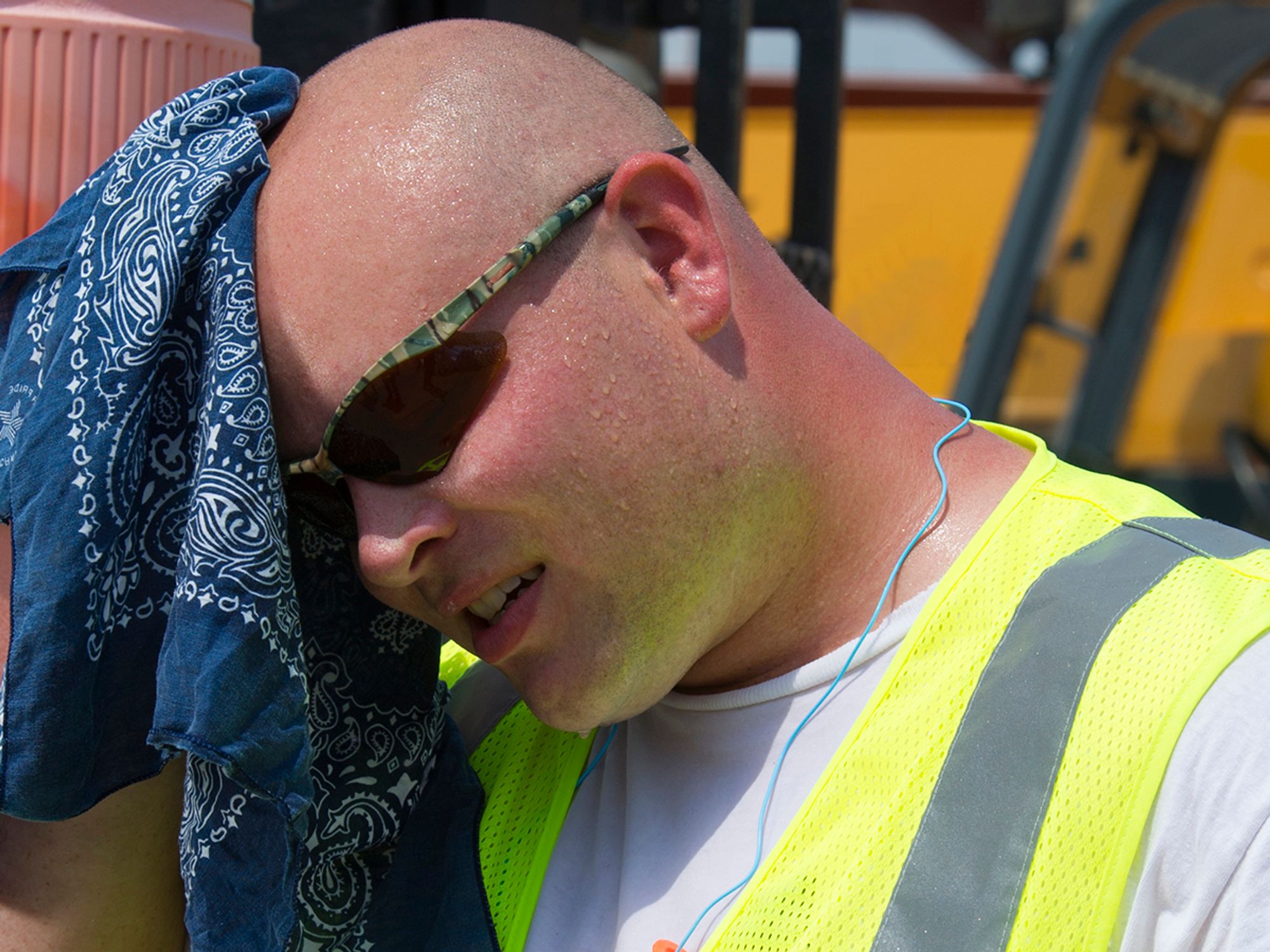InstituteHeat and Cold ExposureAnalysisIn Depth (Level 3)Extreme Temperature PreparationHeat and Cold ExposureEnglishHeat StressFocus AreaUSA
Employee risk
['Heat and Cold Exposure']

- Heat-related illnesses can be serious hazards for employees and include heat cramps, heat exhaustion, heat rash, and heat stroke.
- Factors that increase employees’ risk for heat-related illnesses include environmental factors such as direct sunlight, lack of ventilation, and wearing heavy clothing or PPE, as well as health factors such as age, pregnancy, and chronic illness.
Heat-related illness is a serious hazard employees face while working in hot environments without protection from the elements. In addition, environmental and health factors also increase the employee risk of experiencing heat stress.
Heat-related illness
- Fatigue: Occurs more quickly during exertion in hot conditions because of the body’s natural cooling methods. When the body circulates more blood to the upper layers of the skin in order to release body heat to the environment, relatively less blood is available to provide active muscles, the brain, and other internal organs with the energy they need for peak performance, thereby causing fatigue.
- Heat cramps: Occur in tired muscles when the worker sweats profusely and drinks large quantities of water.
- Heat exhaustion: Can result when a person has lost large amounts of fluid by sweating.
- Heat rash: Occurs as a result of the body’s natural cooling mechanisms. Body heat is released through sweating. This cooling action is most effective if the sweat is able to evaporate into a dry environment. When the air is humid, the skin can remain moist from sweat. If sweat ducts become plugged, a skin inflammation in the form of a rash can develop.
- Heat stroke: Occurs when the body’s temperature regulatory system fails and sweating has become inadequate to remove excess body heat.
- Sunburn: Prolonged exposure to ultraviolet radiation from the sun can produce sunburn. Symptoms include red, sensitive, inflamed skin and even blisters.
- To relieve the pain, soak sunburns in cold water, dry the area, apply ointment, and cover. Severe sunburn requires medical treatment. The only way to prevent sunburn is to avoid sun exposure (by wearing a hat, long sleeves, and sunscreen).
Environmental risk factors
These environmental factors increase the employee risk of heat-related illness:
- High temperatures and humidity
- Exposure to indoor sources of heat (ovens, furnaces)
- Direct sunlight
- Heavy clothing
- Limited airflow or air movement
- Wearing personal protective equipment (PPE)
- Heavy workload
Health risk factors
These factors influence the employee risk of heat-related illness:
- Level of physical fitness
- Opportunity to acclimate to conditions
- Age
- Dehydration
- Obesity
- Alcohol or drug use
- Infection or illness
- Sunburn
- Certain medications
- Pregnancy
- Previous heat-related illness
- Chronic disease
